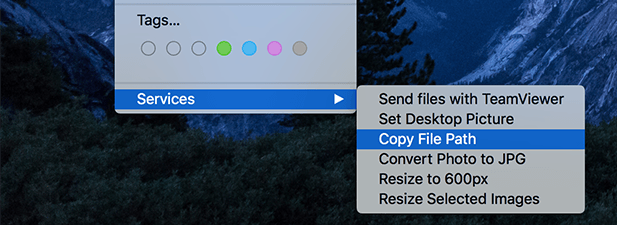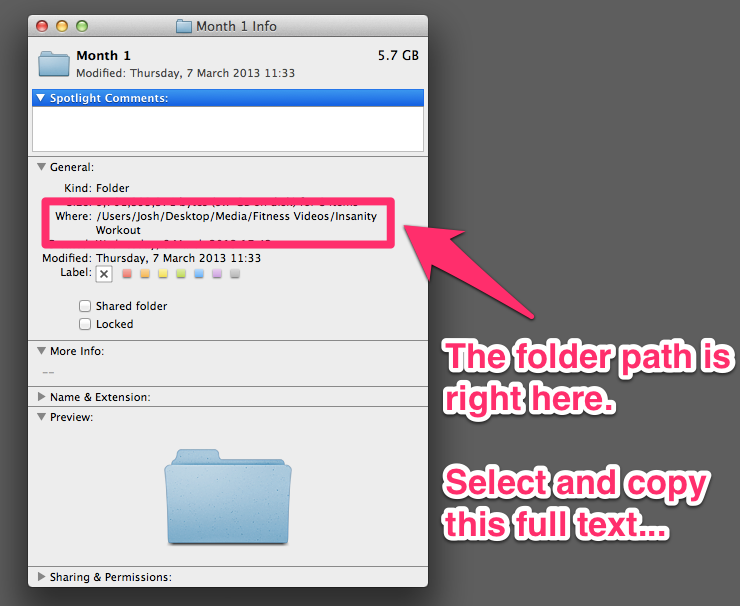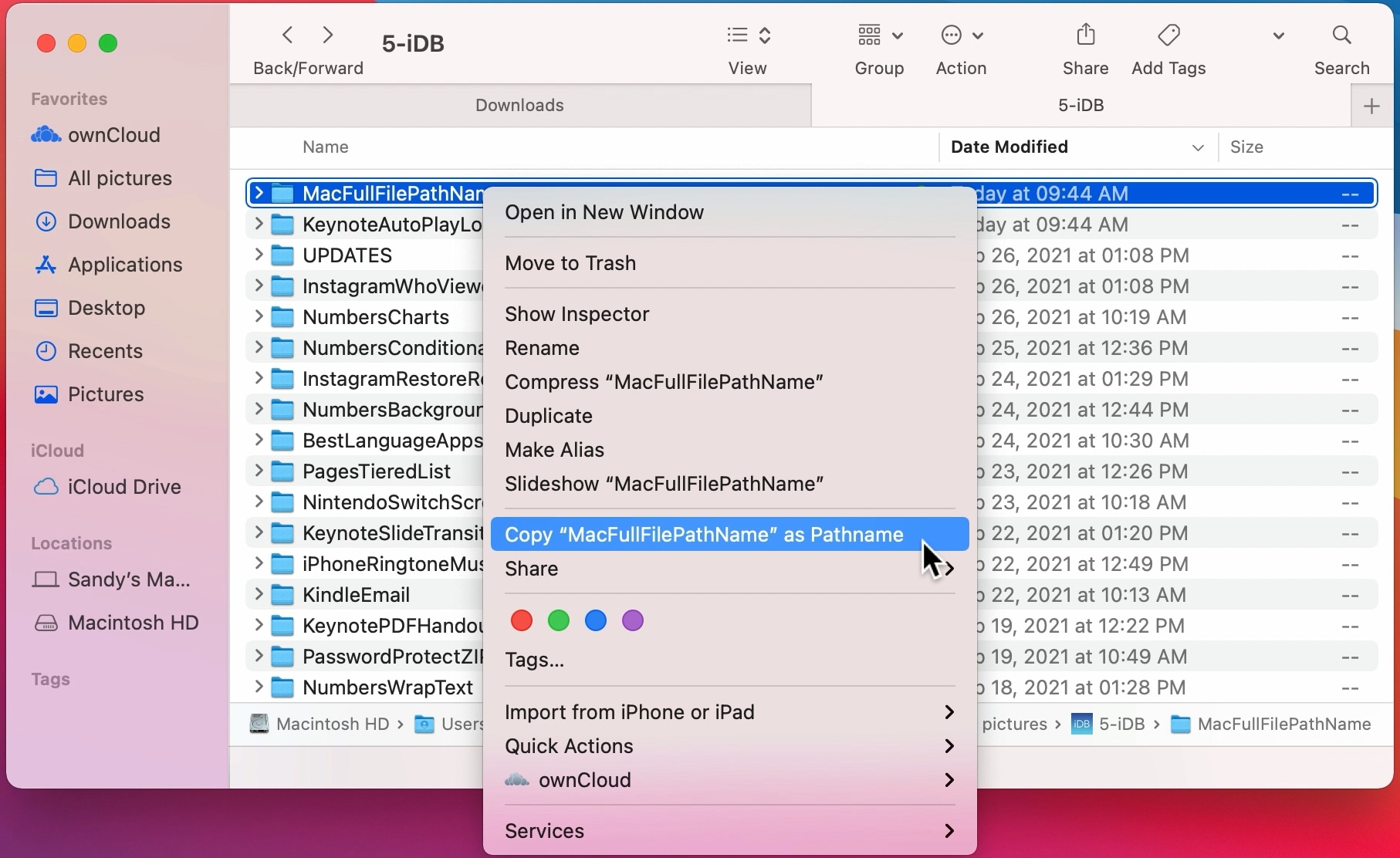

- #FINDER MAC GET FILE PATH HOW TO#
- #FINDER MAC GET FILE PATH FULL#
- #FINDER MAC GET FILE PATH PASSWORD#
- #FINDER MAC GET FILE PATH WINDOWS#
With this built-in app, you can customize your workflows and create shortcuts to do tedious tasks automatically. Select the path and copy it to the clipboard. When completes, find the file path of the file you're searching for. Press enter and wait for the Terminal to complete this task. Enter the following command: find / -name, substitute the right file name for.
#FINDER MAC GET FILE PATH PASSWORD#
Enter the password for your Mac, then press return again.ģ.

Type this command: sudo su, then press return.Ģ. If you don't know where a file locates, follow the steps below to make the Terminal show the file path:ġ.
#FINDER MAC GET FILE PATH FULL#
If you have the file available on your Mac, simply drag and drop it onto your Finder window, and the full file path will be displayed. You can find it in Applications > Utilities, or search in Spotlight. It's also a handy tool for seeing the path of a file.įirst of all, launch the Terminal app on your Mac. You can control the operating system quickly and efficiently to perform tasks, including finding, moving, and deleting files. The terminal allows you to interact with your Mac. Searching in Spotlight can also help you quickly find a file on your Mac. Click the file, then press and hold the Command key, you will see the file path appear on the bottom until you release the key. Type the name of the file in the search bar and find the file you want from the list.Ģ. Shortcuts on Mac are best assistants such as Command-R, Ctrl Alt Delete, etc.ġ. You can shortcuts Command + Space keys to quickly open the Spotlight window. Spotlight can help to display the path of a file. Then you can see a drop-down with the path as it's structured. With the Finder open, hold the Control or Command key and click the current location from the Finder title bar.

From the top menu bar, choose "View" > "Show Path Bar," then the full address shows on the bottom.īesides, you can use the title bar in Finder to know the full path of a file. Open the finder, and click the desired file. With Finder, there are two ways to reveal the file path.įirst, you can find the path of a file with the toolbar in Finder. To copy the file path, you can control-click the file, and press and hold the Option key, choose Copy "" as pathname. Other information also displays such as kind, size, created time, modified time, etc. Choose "General" under "Where," the full file path shows.ģ. Control-click the file, and choose "Get Info" on the menu.Ģ. If you have already opened a file and want to know the complete address of the file, it is pretty easy to get all information of the file, the file path included.ġ.

You can copy and save the path for directly visiting it next time. There are 5 methods to reveal the path of a file on your Mac. With the full address of a file, you can easily and quickly get to any folder or file on your machine, saving you time to enclose folders one by one.
#FINDER MAC GET FILE PATH HOW TO#
If you need to get more available storage, see how to free up space on Mac. How to Delete 'Other' in Mac Storage to Free up Mac Space? If you have used the same Mac for several years, there may be hundreds of files stored on your computer, or even more.
#FINDER MAC GET FILE PATH WINDOWS#
Just like when you enabled the first Terminal command, all of your Finder windows will briefly quit and then Finder will relaunch, this time displaying only the active directory in the title bar.When you create, download, save a document or copy a file to your mac, a path will be assigned to locate the file automatically or manually. If you want to turn it off and revert to showing just the active directory in the Finder title bar, head back to Terminal and use this command instead: defaults write _FXShowPosixPathInTitle -bool false killall Finder It’s only when you see the full path in the Finder title bar that you realize that you’ll need to specify the “Volumes” directory first.ĭespite its usefulness, having the full path displayed in the Finder title bar can be a bit cluttered, especially for longer and more complicated paths. This can come in handy when navigating unfamiliar directories or systems, or if you’re new to Unix-based operating systems.įor example, if you wanted to build or modify a Terminal command based on the path in our first example above, you might logically enter /Data/Dropbox/TekRevue/Articles, because that’s what is shown in the Finder path bar. More importantly, however, this method displays the full Unix path, including root directories like Volumes that are not displayed in the standard Finder path bar.


 0 kommentar(er)
0 kommentar(er)
